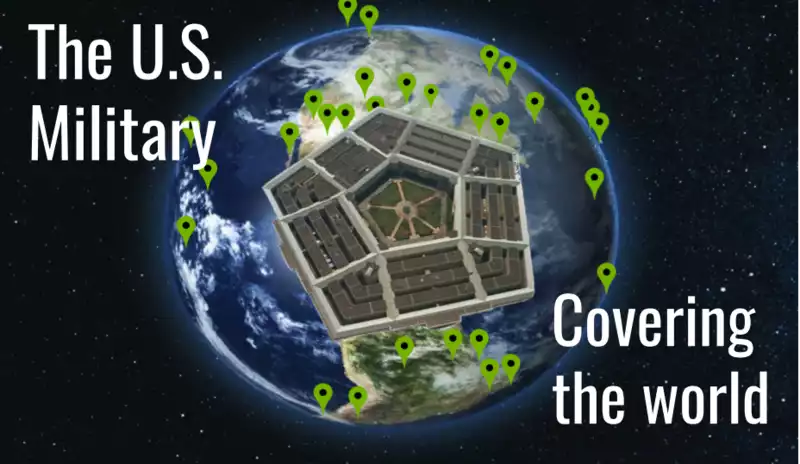
During World War 2, the U.S. Air Force needed tens of thousands of aircraft and weapons as quickly as possible. Private sector aircraft manufacturers didn't have the resources to meet this challenge. So, a partnership between the government and the private sector was formed. U.S. taxpayers paid for the building of 85 manufacturing plants for building aircraft, engines, radios, and for processing special fuels. Here's a map of where many of them were located.
Help using Google Maps
The Full Screen control in the upper righthand corner of the Google Maps display expands the display to cover the entire computer screen. This full-screen feature is not available on Apple IOS devices like the iPad.
You can exit out of full screen by pressing the Escape key or clicking the control in the upper righthand corner of the display.
The Map/Satellite control in the upper lefthand corner of the screen lets you choose either the normal map view or the satellite view. The satellite view allows you to see the actual military facility when you zoom in. You can choose to turn Labels on or off. The labels are the names of places, businesses, cities, etc. that appear on the map. You can turn off the labels if they obstruct your view.
When you select the Map view, you can turn on terrain features by clicking or touching the Terrain box. This will show things like mountain ranges, similar to looking at a relief map.
You can zoom in and out in a few ways. The lower righthand corner of the Google Maps display has a plus sign and a minus sign that controls zooming. If you're using a mouse with a scroll wheel, the wheel controls zooming. If you're using an IOS device like an iPhone or iPad, double-tapping the display zooms in but tapping does not zoom out.
Most touch screen devices will zoom by pinching the display with two fingers.
This is a Google map. You can use your mouse (or fingers) to zoom, move the map, and click on the markers to get more information about a plant.
Here's a list of the Air Force Plants by name.
Although these plants were owned by the government/taxpayers, they were run by private sector companies under contract. At the end of the war, many of the larger plants continued to operate in the same way as they did during the war. Over the years, some of them changed management companies.
NOTE: There was often quite a bit of land that went along with these plants.
Some of these plants were closed because the Air Force had no use for them any longer. They were disposed of in a few ways:
- They were donated or sold to the town or city they were located in.
- They were transferred to another military service, such as the Navy.
- They were sold to private individuals or companies but usually for an amount that was less than the going rate, especially if you knew (or were) a politician.
- They were given to the companies that were running them during the war. This was done with a Quitclaim Deed that didn't involve the Air Force asking for money.
Companies like Boeing were the recipients of such deeded property. This was a good thing to do because it allowed us to bootstrap a commercial airline industry quickly. It created jobs and generally boosted the economy. But did it reward taxpayers for their upfront investment? The article named We Created a Monster says no.

Sources
The American Automobile Industry in World War Two